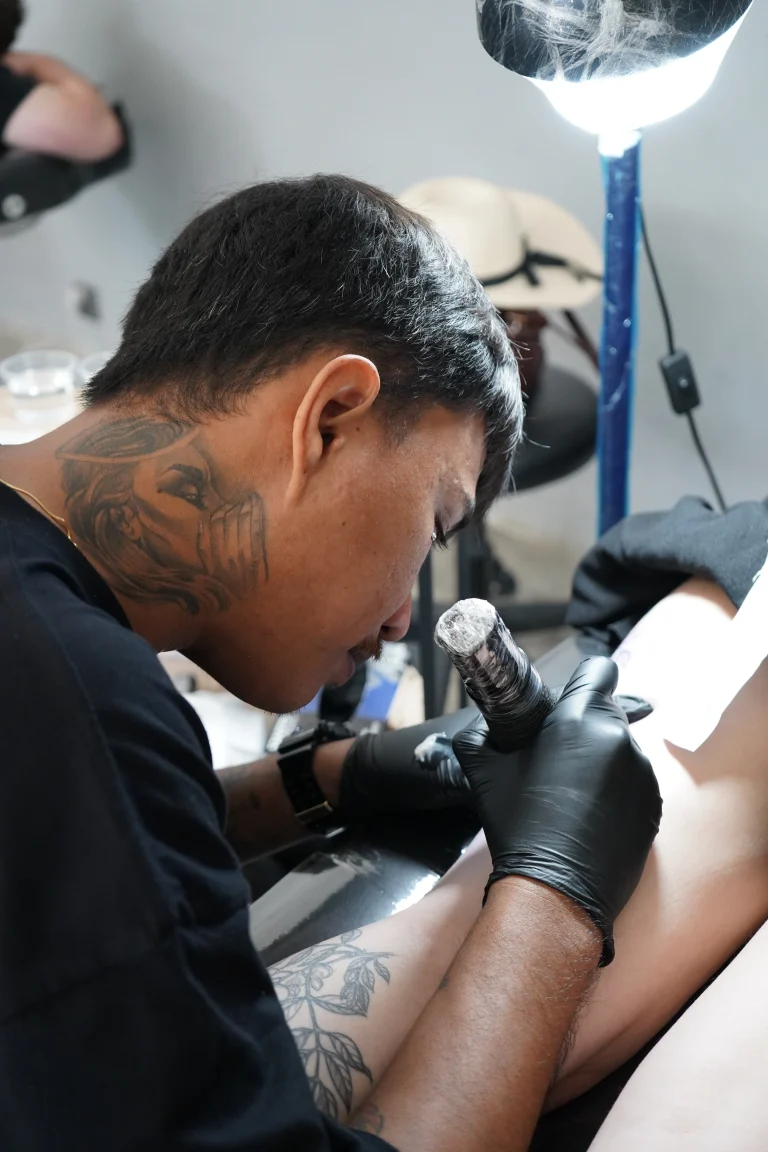Tattoos have been a part of human culture for thousands of years. But how have the tools for creating these works of art evolved? From rudimentary stone needles to the sophisticated machines of today, the history of the tattoo machine is as rich and colourful as the tattoos themselves. Whether you’re a tattoo enthusiast, an artist, or simply curious, join us on a journey through time to explore the origins and development of tattooing tools.
The Dawn of Tattooing Tools
Ancient Beginnings Over 5,000 years ago, the first evidence of tattooing emerged. Early tools, made from sharp stones and bones, were used to pierce the skin and insert pigments.
Cultural Significance Tattooing held deep cultural significance in ancient societies. In ancient Egypt, tattoos on female mummies were believed to have protective and therapeutic purposes. Indigenous tribes worldwide used tattoos to signify social status, rites of passage, and spiritual beliefs.
Evolution of Techniques Tattooing techniques varied widely. Some cultures used manual poking methods, while others employed rudimentary tools like ink-dipped combs. These early methods laid the groundwork for the intricate designs we see today.
The Arrival of the Stencil
Early Innovations By the 19th century, the tattooing process saw more structured techniques with the use of stencils, allowing for more consistent and detailed designs.
Frederick R. Thomas In 1876, Frederick R. Thomas patented a design for “improved” tattoo needles, making the process more efficient and less painful.
Impact on Tattoo Culture Stencils and improved needles marked a significant milestone, setting the stage for more complex and diverse designs.
The Invention of the Electric Tattoo Machine
Samuel O’Reilly’s Milestone In 1891, Samuel O’Reilly revolutionised tattooing by inventing the electric tattoo machine, inspired by Thomas Edison’s electric pen. This device could puncture the skin rapidly and consistently, reducing the time required for a tattoo and improving quality.
Widespread Adoption The electric tattoo machine quickly gained popularity, allowing artists to produce more intricate designs with greater precision.
Advancements in Coil Machines
Refinements and Improvements The early 20th century saw numerous refinements to the coil tattoo machine. Percy Waters, in 1929, patented a more advanced version with a spring-loaded armature bar, improving efficiency and ease of use.
The Emergence of Rotary Machines
An Alternative Approach Rotary machine, using a rotating motor to drive the needles, offered a quieter operation and smoother, more consistent needle movement. They have gained traction among professional artists for their versatility and reliability.
The Rise of Pneumatic Machines
A Technological Leap In the late 20th century, pneumatic machines, invented by Carson Hill, used compressed air to power the needles. Known for their lightweight design and reduced vibration, they have carved out a niche market despite requiring an air compressor.
The Role of Modern Technology
Digital Innovations Modern tattoo machines often feature digital controls, allowing artists to fine-tune settings for optimal performance. Wireless machines are becoming increasingly popular, offering greater mobility and convenience.
The Importance of Hygiene and Safety
Early Concerns In the early days, hygiene and safety were often overlooked, leading to a higher risk of infections.
Modern Standards Today, hygiene and safety are paramount. Modern machines are designed with disposable parts and easy-to-clean surfaces to minimise contamination risks. Regulations and training programs ensure the safety and well-being of clients.
The Cultural Impact of Tattoo Machines
Mainstream Acceptance The evolution of tattoo machines has played a significant role in the mainstream acceptance of tattoos. Advanced machines have enabled artists to bring their creative visions to life, leading to a renaissance in tattoo art.
Global Influence Tattoo culture has spread globally, influenced by diverse traditions and styles. Modern machines have made it easier for artists to experiment with different techniques and share their work worldwide.
The Role of Innovation
Constant Evolution The history of the tattoo machine is a testament to the power of innovation. Each development has driven the industry forward, opening new possibilities for artists and clients alike.
Looking Ahead The future of tattoo machines looks bright, with ongoing research promising even more exciting innovations, from improved ergonomics to enhanced precision.
From ancient stone needles to cutting-edge digital devices, the history of the tattoo machine is a fascinating journey of innovation and creativity. Modern machines have transformed tattooing, making it more accessible, safe, and versatile than ever before. Ready to explore the world of tattoos further? Our expert team at Mason’s Ink Seminyak is here to help you refine your style and choose the perfect designs. Book a consultation with one of our skilled artists today and take the first step towards your next piece of body art!


